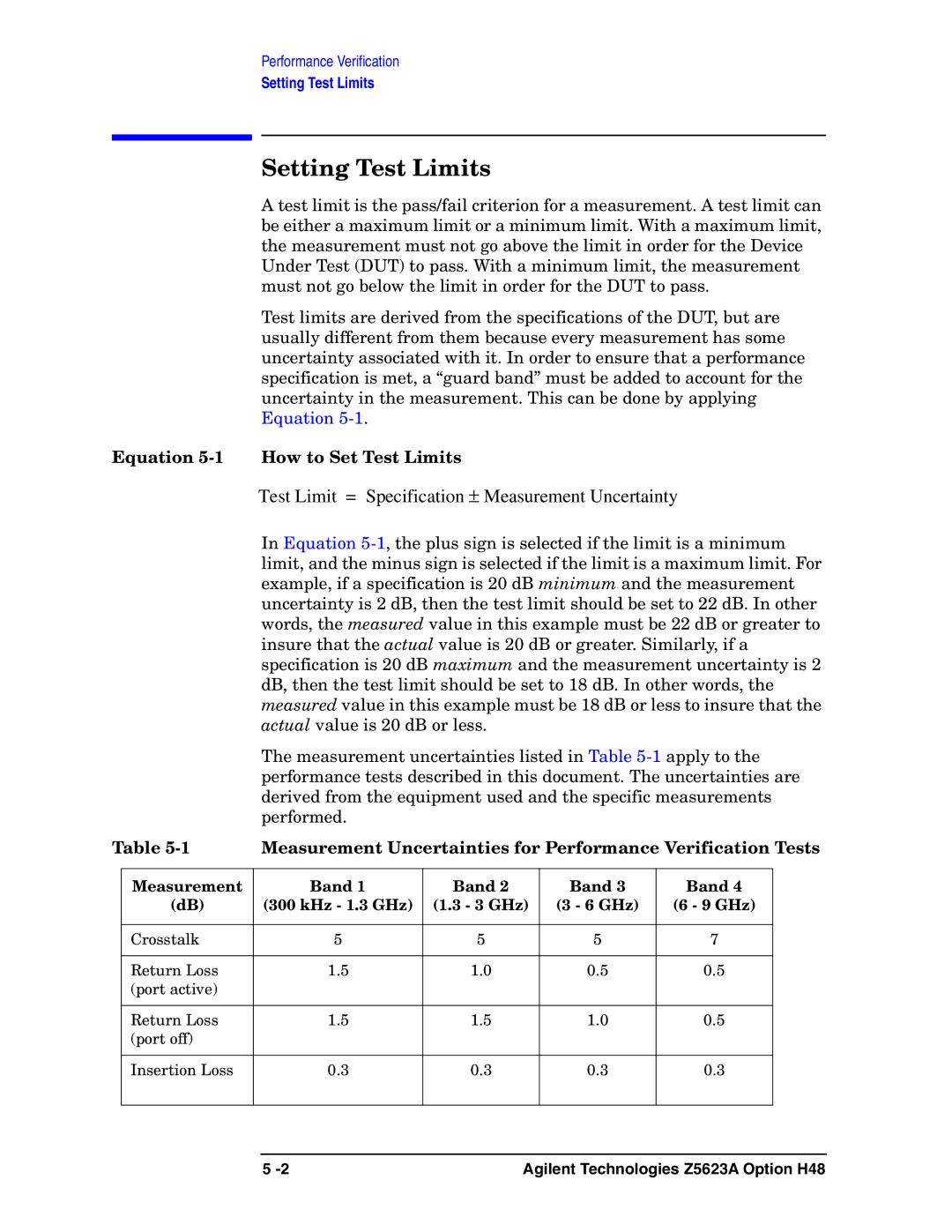
Performance Verification
Setting Test Limits
Setting Test Limits
A test limit is the pass/fail criterion for a measurement. A test limit can be either a maximum limit or a minimum limit. With a maximum limit, the measurement must not go above the limit in order for the Device Under Test (DUT) to pass. With a minimum limit, the measurement must not go below the limit in order for the DUT to pass.
Test limits are derived from the specifications of the DUT, but are usually different from them because every measurement has some uncertainty associated with it. In order to ensure that a performance specification is met, a “guard band” must be added to account for the uncertainty in the measurement. This can be done by applying Equation
Equation 5-1 How to Set Test Limits
Test Limit = Specification ± Measurement Uncertainty
In Equation
The measurement uncertainties listed in Table
Table | Measurement Uncertainties for Performance Verification Tests | |||||
|
|
|
|
|
|
|
| Measurement | Band 1 | Band 2 | Band 3 | Band 4 |
|
| (dB) | (300 kHz - 1.3 GHz) | (1.3 - 3 GHz) | (3 - 6 GHz) | (6 - 9 GHz) |
|
|
|
|
|
|
|
|
| Crosstalk | 5 | 5 | 5 | 7 |
|
|
|
|
|
|
|
|
| Return Loss | 1.5 | 1.0 | 0.5 | 0.5 |
|
| (port active) |
|
|
|
|
|
|
|
|
|
|
|
|
| Return Loss | 1.5 | 1.5 | 1.0 | 0.5 |
|
| (port off) |
|
|
|
|
|
|
|
|
|
|
|
|
| Insertion Loss | 0.3 | 0.3 | 0.3 | 0.3 |
|
|
|
|
|
|
|
|
5 | Agilent Technologies Z5623A Option H48 |
